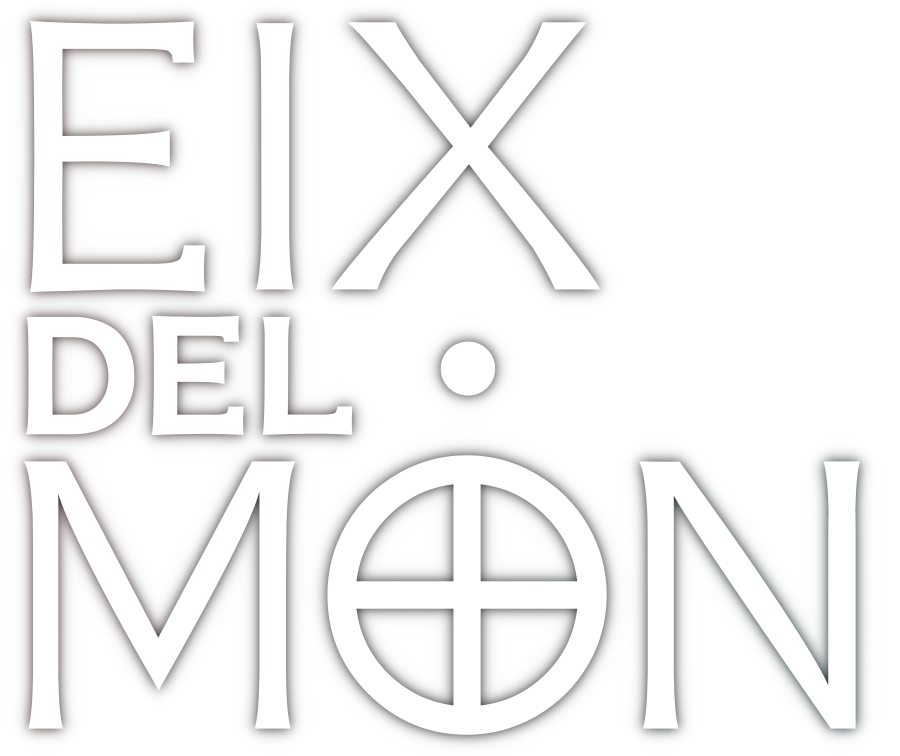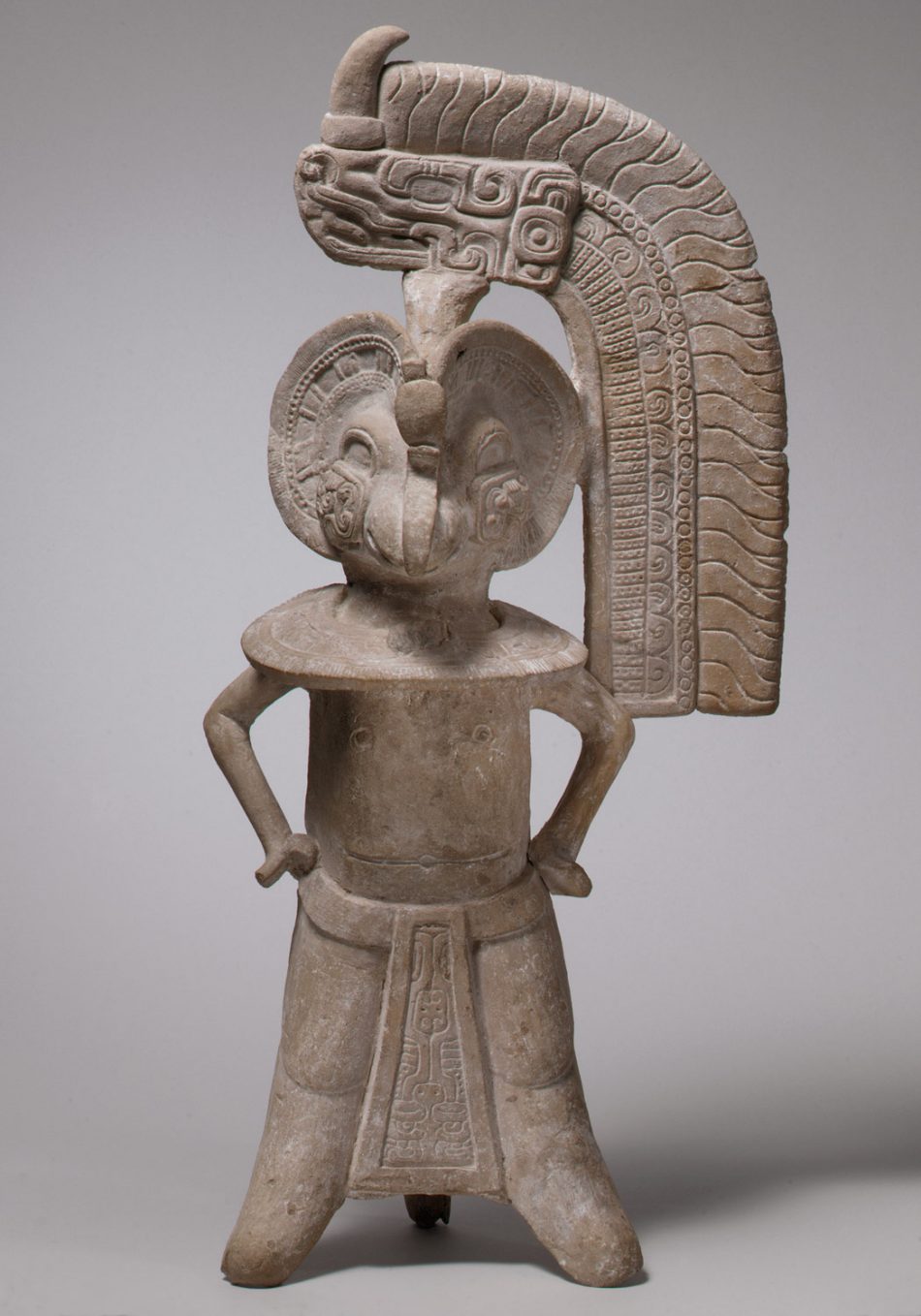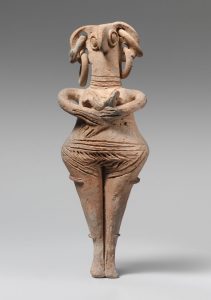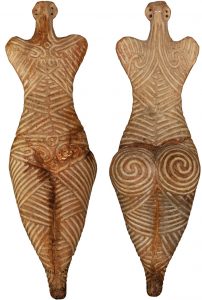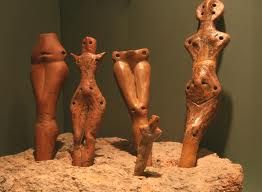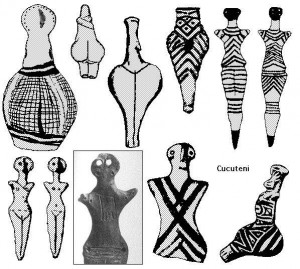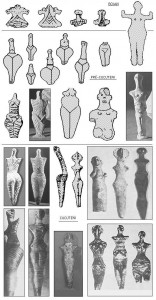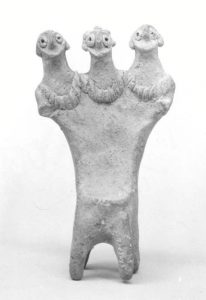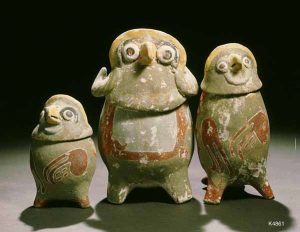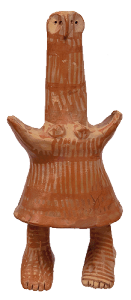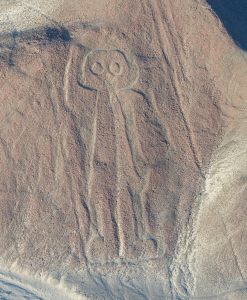Bird-Headed Figure Whistle. © The Metropolitan Museum of Art.
Date: 8th–9th century
Geography: Mexico, Mesoamerica, Veracruz
Culture: Veracruz
Medium: Ceramic, pigment
Dimensions: H. 20 1/4 × W. 9 1/2 × D. 5 3/4 in. (51.4 × 24.1 × 14.6 cm)
Classification: Ceramics-Musical Instruments
Credit Line: The Michael C. Rockefeller Memorial Collection, Gift of Nelson A. Rockefeller, 1963
Accession Number: 1978.412.80
The original caption reads:
This freestanding ceramic figure represents a mastery of Veracruz decorative style and a spirited, improvisational use of form. An attitude of power is conveyed by a wide stance, outward extended elbows, and hands placed upon hips. Opposing the solidity of this posture is the floating, asymmetrical form of a fantastic horned and feathered serpent projecting from the head of the masked human figure or bird-headed anthropomorph. This figure wears an elaborate collar and a loincloth with a panel decorated with an abstract design that can be read as a splayed anthropomorphic figure. The broad collar that caps the figure’s shoulders possesses a central element and is incised along its edge to depict a fringed border. Panels of scrollwork and interlaces and bands of repeated motifs characteristic of the art of Veracruz appear in relief on surfaces throughout the composition. The figure is actually a whistle and its musical function and the creative, whimsical compositions that inform the object give it an air of ceremony and celebration.
It looks remarkably similar to some Mesopotamian figures:
